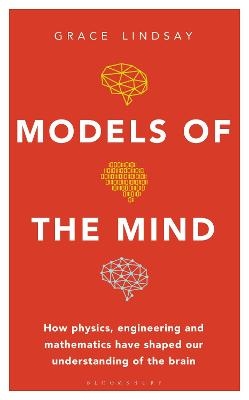
Models of the Mind
Bloomsbury Sigma (Verlag)
978-1-4729-6642-1 (ISBN)
- Titel ist leider vergriffen;
keine Neuauflage - Artikel merken
For more than a century, a diverse array of researchers searched for a language that could be used to capture the essence of what these neurons do and how they communicate – and how those communications create thoughts, perceptions and actions. The language they were looking for was mathematics, and we would not be able to understand the brain as we do today without it.
In Models of the Mind, author and computational neuroscientist Grace Lindsay explains how mathematical models have allowed scientists to understand and describe many of the brain’s processes, including decision-making, sensory processing, quantifying memory, and more. She introduces readers to the most important concepts in modern neuroscience, and highlights the tensions that arise when the abstract world of mathematical modelling collides with the messy details of biology.
Each chapter of Models of the Mind focuses on mathematical tools that have been applied in a particular area of neuroscience, progressing from the simplest building block of the brain – the individual neuron – through to circuits of interacting neurons, whole brain areas and even the behaviours that brains command.
Lindsay examines the history of the field, starting with experiments done on frog legs in the late eighteenth century and building to the large models of artificial neural networks that form the basis of modern artificial intelligence. Throughout, she reveals the value of using the elegant language of mathematics to describe the machinery of neuroscience.
Grace Lindsay is a computational neuroscientist currently based at University College London. She completed her PhD at the Center for Theoretical Neuroscience at Columbia University, where her research focused on building mathematical models of how the brain controls sensory processing. Before that, she earned a bachelor’s degree in Neuroscience from the University of Pittsburgh and received a research fellowship to study at the Bernstein Center for Computational Neuroscience in Freiburg, Germany. She was awarded a Google PhD Fellowship in Computational Neuroscience in 2016 and has spoken at several international conferences.
1: Spherical Cows
2: How Neurons Get Their Spike
3: Learning to Compute
4: Making and Maintaining Memories
5: Excitation and Inhibition
6: Stages of Sight
7: Cracking the Neural Code
8: Movement in Low Dimensions
9: From Structure to Function
10: Making Rational Decisions
11: How Rewards Guide Actions
12: Grand Unified Theories of the Brain
Mathematical Appendix
Acknowledgements
Bibliography
Index
| Erscheinungsdatum | 09.03.2021 |
|---|---|
| Zusatzinfo | black and white illustrations throughout |
| Verlagsort | London |
| Sprache | englisch |
| Maße | 135 x 216 mm |
| Gewicht | 514 g |
| Themenwelt | Sachbuch/Ratgeber ► Natur / Technik |
| Mathematik / Informatik ► Mathematik ► Angewandte Mathematik | |
| Naturwissenschaften ► Biologie ► Humanbiologie | |
| Naturwissenschaften ► Biologie ► Zoologie | |
| ISBN-10 | 1-4729-6642-2 / 1472966422 |
| ISBN-13 | 978-1-4729-6642-1 / 9781472966421 |
| Zustand | Neuware |
| Informationen gemäß Produktsicherheitsverordnung (GPSR) | |
| Haben Sie eine Frage zum Produkt? |
aus dem Bereich


